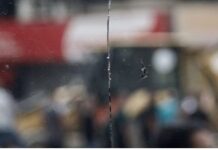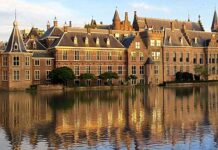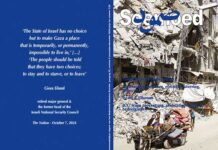Vera Sajrawi
+972 Magazine / July 13, 2023
Palestinians opened their homes, donated supplies, and volunteered to clean up for families after Israel’s invasion of Jenin refugee camp.
From the moment Israel launched its military aggression against the Jenin refugee camp on July 3, thousands of Palestinians inside found themselves cut off from their most basic needs. The two-day assault effectively placed the camp under blockade, with the supply of water, electricity, and food coming to a standstill. Hours after it began, the army ordered thousands of camp residents to leave their houses with only the clothes they were wearing, evoking harrowing images of the expulsions of the Nakba in 1948.
Yet alongside the horrific scenes of destruction and displacement, inspiring stories of Palestinian solidarity and interdependence also emerged throughout those days.
It started on the first night of the Israeli invasion. When the military ordered or threatened residents inside the camp to leave — forcing about 5,000 people to flee in distress and without their belongings — families outside the camp quickly invited the refugees to stay at their houses. By the second day of the invasion, Palestinians from the Jenin district had offered further accommodation, and donated massive supplies of food, water, milk, baby diapers, clothes, health equipment, and other items.
The outpouring of aid did not just come from Jenin. Youth movements from Nablus to Hebron, as well as Palestinians living inside Israel, launched public campaigns to collect supplies through makeshift stations in their towns and monetary donations online. Individual volunteers also tried to help in any way possible; some brought bottled water, food, and other needs for displaced families, while others joined the Jenin municipality’s growing team of recovery workers to remove the rubble and clean the camp after the assault.
This mass support has proved vital morally as much as materially. Over two days, the Israeli army killed 12 Palestinians and wounded more than 250, while causing wanton damage to residences and public infrastructure. According to the Jenin municipality, the camp, which has around a thousand properties, suffered huge damage to the water and electricity networks, and 80 percent of homes were partly or completely destroyed.
Resilience through art
The famous Freedom Theatre, which is located on the main road of the Jenin refugee camp, saw its entrance reduced to rubble after the Israeli military bombed the area during the invasion. The theater’s members, however, have been actively helping the community to recover and stay positive. On July 9, the theater organized a street party for children in which performers dressed up as clowns and cartoon characters, singing and dancing with the kids, while touring the devastated streets of the camp to spread joy.
“There are a lot of varied efforts, big and small,” said Mustafa Shata, the manager of the Freedom Theatre. “The [Palestinian Authority] prime minister [Mohammad Shtayyeh] formed a reconstruction committee, including the Popular Committee for Jenin Camp Services, and several individuals from the Jenin district and municipality.
“But in general, most Palestinians are providing direct support and aid,” he said. “They are coming to the camp and interacting with the residents directly.”
The city’s Popular Committee has organized a blood donation drive from all Palestinian cities in the West Bank, announcing on its Facebook page that “Jenin hospitals are in need of blood of any kind, due to the large number of injuries in the Jenin camp.” The committee, among others, also announced temporary shelter locations for those displaced from the camp, including local hotels and clubs that stepped in to house people.
Activists and journalists have similarly organized campaigns for the collection of aid in several West Bank cities. Bakir Abd Alhaq, one of the coordinators of a campaign in Nablus, explained how their initiative “started spontaneously the morning after the Israeli assault began” through a WhatsApp group.
“When we saw the scenes of displacement, it was excruciating and cruel, and the harsh humanitarian situation following the Israeli invasion started without prior warning,” he said. “We felt that we should do something, so we announced our campaign on different groups and local radios. We allocated a cultural center downtown to drop off the donations, and the response was huge from the people in the Nablus district. We started at 5:00 a.m., and by 9:00 a.m. we had more than one and a half tons of bread.
“The donations were beyond what we expected, and we kept receiving donations until late at night,” he continued. “About 60 trucks and cars participated in transporting the food supplies and water to Jenin. We delivered them to five different locations, including Jenin’s governmental hospital.”
The Nablus campaign also delivered meat to the Jenin hospital, which was suffering from a food shortage, to cook meals for the patients. The hospital was also lacking medical supplies, which the campaign provided immediately.
People offered everything, Abd Alhaq said, driving their cars to Jenin full of supplies, with local businesses and markets donating too. This week, he added, the campaign plans to send 200 young people from the Nablus area to help in the cleanup efforts and removal of the rubble inside Jenin camp.
‘Everyone wants to help our people’
Social media played a vital role in spreading the word across Palestine about how people could offer help. What began as solidarity through word of mouth between Jenin locals quickly amplified on the internet, enabling thousands near and far to give money and supplies. On Facebook, from the first day of the assault, Palestinian bakeries and shops announced that they were donating bread, groceries, water, and other goods. Restaurants also declared that they would provide catering for the displaced, and mosques and churches opened their doors for people to sleep inside.
Dozens of homeowners outside the camp also went on social media platforms to share that they are willing to receive people either in their own houses with their families, or openly listed their properties and locations, and invited people to contact them to arrange moving in.
In Zababdeh, a small town near Jenin, a number of volunteers from Our Lady of the Visitation Church prepared its facilities to receive displaced residents from the Jenin camp, providing a place to stay with food and drink. Many mosques did the same. Other people of the town also offered their assistance to contribute equipment and food.
Support was also extended to Palestinian fighters in the camp, who were widely hailed as defenders against the invading Israeli army. A photo of a letter circulated online showing a piece of paper written by a Jenin camp resident who was forced to leave his house, yet left his money and belongings there to support the resistance fighters if they needed them.
“Food and supplies are in the house and in the refrigerator,” the resident wrote. “A back door opens onto our neighbor’s yard if you need to escape. The house is all for you brick by brick. May you remain well. There’s NIS 700 in the freezer, if you need money. May God protect you.”
A group of former and current students from different universities in Jenin who saw the attack on the camp while at a friend’s place in Qabatiya, a nearby city, also felt that they had to do something, said Youssef Kamil, activist and former student.
“When we saw videos of our people in Jenin being forced out of their houses into the streets, we felt like it’s not acceptable to us that they feel alone or in need of anything. We decided to act swiftly,” Kamil said.
The group of young activists and students started by locating empty dorms and students’ apartments around the American University of Jenin in Al-Zababdeh town. They then began collecting necessary supplies, including food and water, and afterward posted on social media and contacted friends at different universities, forming a bigger team.
“We started receiving so many calls from students and apartment owners,” Kamil said. “It was such a beautiful turnout, and we felt that everyone wants to help our people so we could feel that we were able to contribute — even with a small fraction of what [those in Jenin refugee camp] are sacrificing.”
After finding a bus company that was ready to help, the students coordinated the transport of the families from the street to the accommodations. They opened a small storage space in one of the dorms and put the deputy head of students’ counsel, who is from Hebron, in charge of collecting donations. It was not only students and friends who turned up, but also residents of the towns near from Hebron to Ramallah, Jerusalem to Jericho.
The group also prepared a database of the families that need help, and they remain in touch with them. “We try to estimate what and how much they need,” Kamil said. “They refuse to ask for aid because they do not want to burden us, they want to figure out things on their own. The dignity I witnessed in that camp is amazing.”
The group of students and activists will continue independently gathering information about the families in need, and delivering aid outside official organizations, Kamil added. “We want to do it in our own way, and we want to feel that at least we didn’t just watch and act after we saw what happened to our people,” he said.
Social solidarity in times of Israeli assaults is a common Palestinian practice — a demonstration of people’s strength, creativity, and hospitality in providing aid and shelter for free. In wartime, all homes are considered a shelter for the displaced.
This custom of care is deeply rooted in Palestinian history and tradition, including at the time of the Nakba in 1948, when Zionist forces stormed cities and villages, killing and displacing thousands of families. The practice was also witnessed en masse during the military rule over Palestinian citizens inside Israel, and after the Naksa of 1967 when Israel occupied the Gaza Strip and the West Bank, including East Jerusalem.
Such remarkable acts of solidarity were further witnessed during the First and Second Intifadas. Jenin refugee camp itself received mass support and empathy following the Israeli massacre of 2002, when the army stormed into the city as part of “Operation Defensive Shield.” The occupation’s violence may have remained two decades later, but so too has the Palestinians’ resilience.
Vera Sajrawi is an editor and writer at +972 Magazine












